AMD Zen 3 Ryzen Deep Dive Review: 5950X, 5900X, 5800X and 5600X Tested
by Dr. Ian Cutress on November 5, 2020 9:01 AM ESTGaming Tests: Final Fantasy XIV
Despite being one number less than Final Fantasy 15, because FF14 is a massively-multiplayer online title, there are always yearly update packages which give the opportunity for graphical updates too. In 2019, FFXIV launched its Shadowbringers expansion, and an official standalone benchmark was released at the same time for users to understand what level of performance they could expect. Much like the FF15 benchmark we’ve been using for a while, this test is a long 7-minute scene of simulated gameplay within the title. There are a number of interesting graphical features, and it certainly looks more like a 2019 title than a 2010 release, which is when FF14 first came out.
With this being a standalone benchmark, we do not have to worry about updates, and the idea for these sort of tests for end-users is to keep the code base consistent. For our testing suite, we are using the following settings:
- 768p Minimum, 1440p Minimum, 4K Minimum, 1080p Maximum
As with the other benchmarks, we do as many runs until 10 minutes per resolution/setting combination has passed, and then take averages. Realistically, because of the length of this test, this equates to two runs per setting.
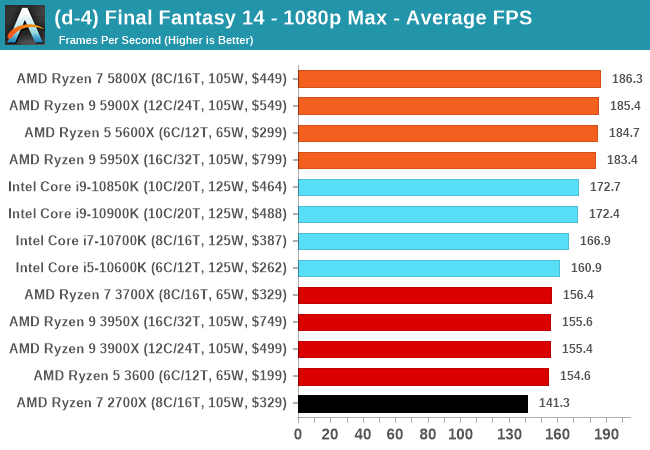
| AnandTech | Low Resolution Low Quality |
Medium Resolution Low Quality |
High Resolution Low Quality |
Medium Resolution Max Quality |
| Average FPS | 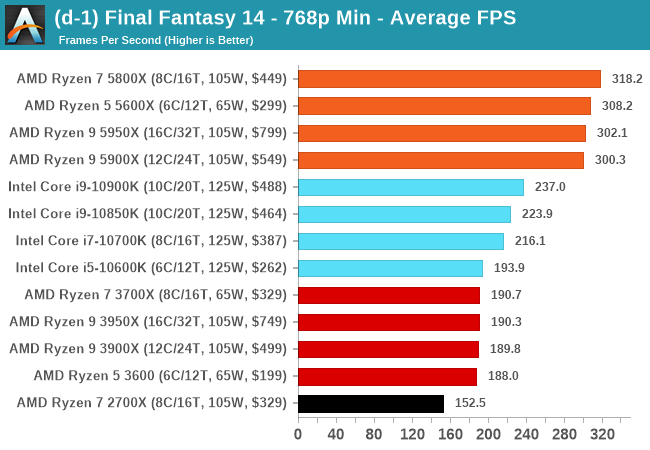 |
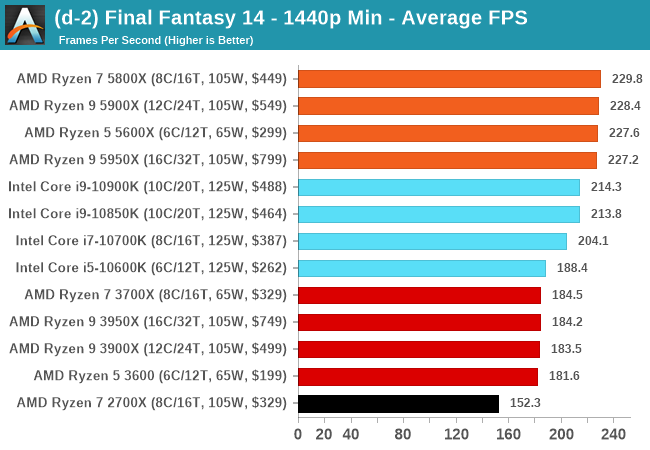 |
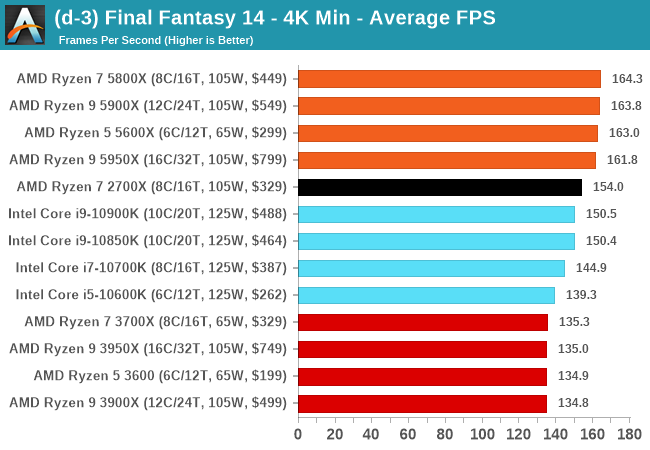 |
 |
All of our benchmark results can also be found in our benchmark engine, Bench.


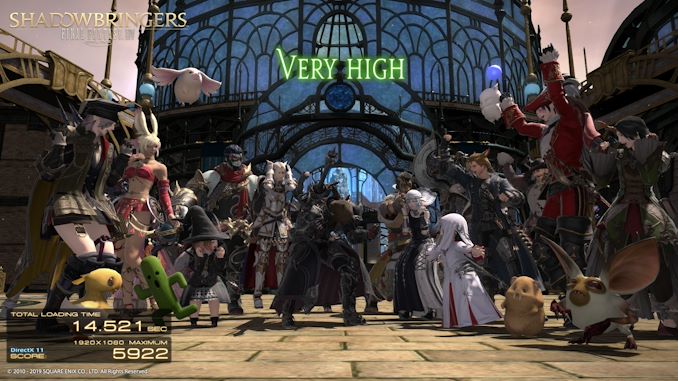








339 Comments
View All Comments
lightningz71 - Friday, November 6, 2020 - link
With the switch to DDR5 coming, there is a need to update the IO die anyway. They could move to a previous node bulk process like TSMC 10nm or Samsung's 8nm and reduce pin count for just three CCDs and manage three CCDs and one IO die in a package well enough. Given that the next CCDs will be on N5P, power draw should come down for those as well, enabling them to stay in the same envelope.lmcd - Monday, November 9, 2020 - link
Samsung's 8nm is provably undesirable for high-volume parts though. I'd argue going the other way, pick a low power node and see if you can get the chiplet architecture in high-end laptop and desktop APU SKUs. That would push their release cadence ahead to same timeframe as desktop and absolutely dominate Intel.eastcoast_pete - Thursday, November 5, 2020 - link
Thanks Ian and Andrei! The one major fly in the ointment for me is the pricing of the entry-level Zen 3 processor. At least one option under $ 200 would have been nice. But then, both AMD and Intel are about making profit for their shareholders, and I guess there isn't a business reason for AMD to offer an entry-level Zen3 below $ 200.owoeweuwu - Thursday, November 5, 2020 - link
why no high resolution + max quality?lame benchmark
Spunjji - Monday, November 9, 2020 - link
Because you won't see any significant difference between the CPUs; It'll just be a bunch of bars next to each other.If that's your use case, then pretty much any of the CPUs in these benchmarks will be enough for you. If you're concerned about how well the CPU you buy now will work with future games then it's a bit of a crap shoot, but these results will give you a better idea than nothing at all.
RedOnlyFan - Thursday, November 5, 2020 - link
So there's not much improvements for gaming. Meh.silverblue - Thursday, November 5, 2020 - link
CS:GO, Shadow of the Tomb Raider, Death Stranding, Serious Sam 4, Hitman 2, Division 2, Flight Simulator 2020 etc. are all showing large gains at 1080p over Zen 2, particularly CS:GO. Check out videos by LTT/Hardware Unboxed (3950 only today)/Gamers Nexus (again, 3950 only today).silverblue - Tuesday, November 10, 2020 - link
Sorry, just realised five days later that I meant to put 5950. Anyway, you all knew what I meant.Spunjji - Sunday, November 8, 2020 - link
It's like you read a different reviewPaazel - Thursday, November 5, 2020 - link
Would be great to see 2600k and a 6700k for reference. These were large benchmark CPU's that lot of people have/had!